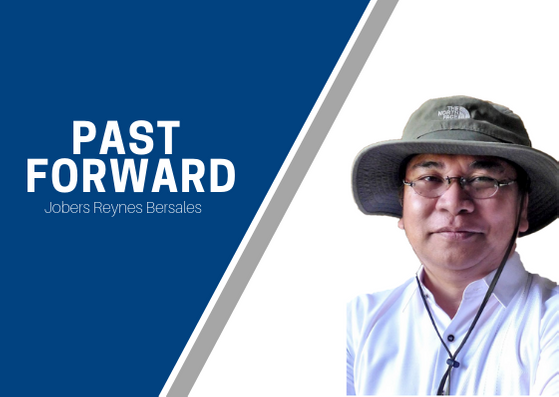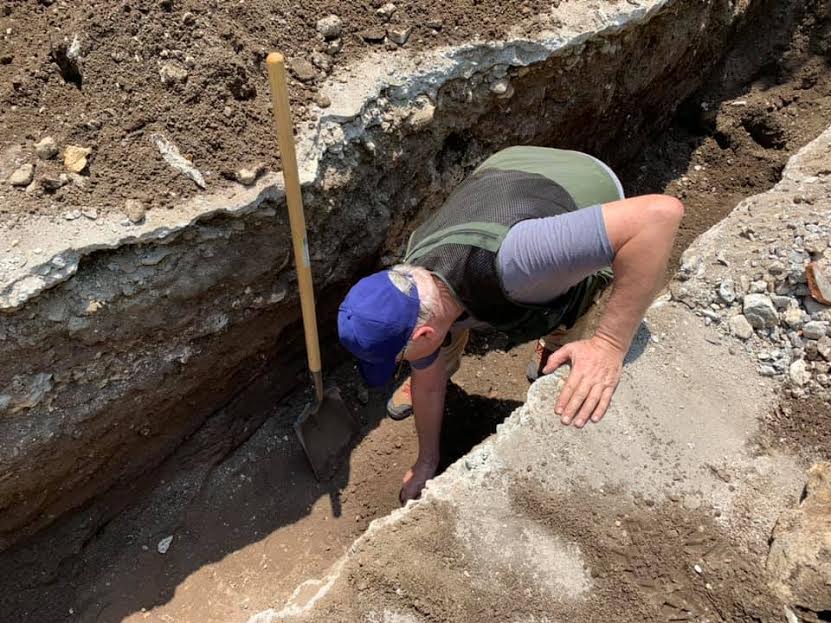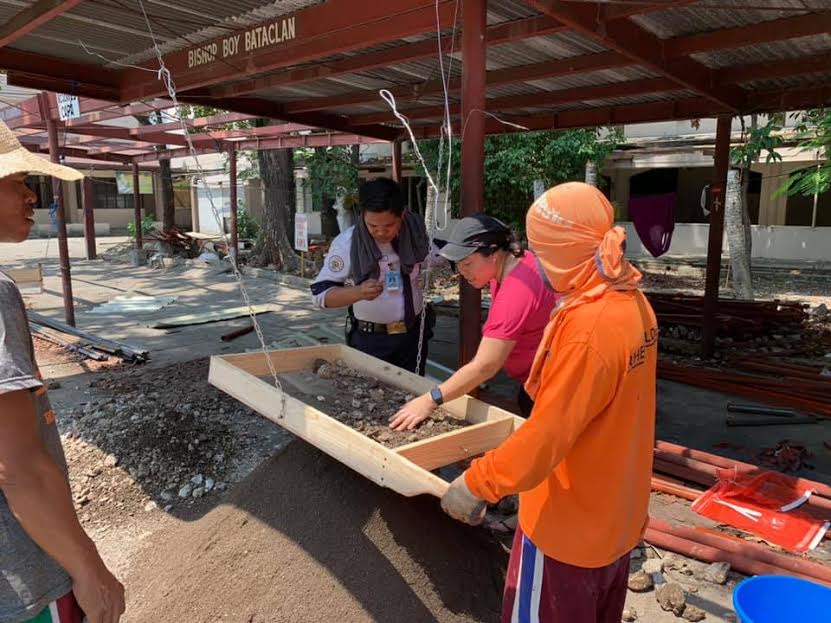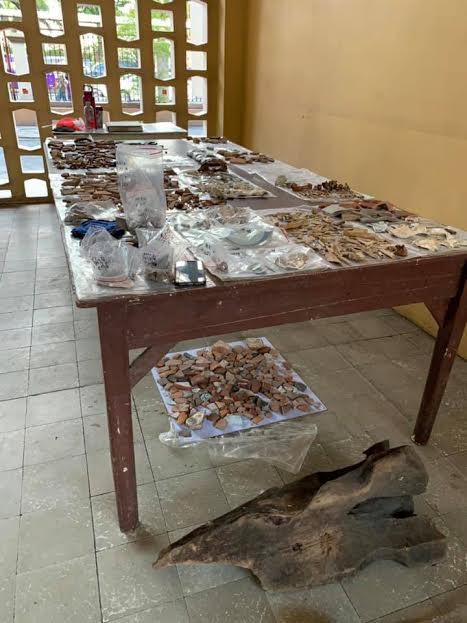 A wooden house post, a Chinese coin, and plenty of animal bones, tradeware ceramics, earthenware sherds, clay tiles and lime mortar masonry fragments. These are, in gist, what have been recovered so far in the first four days of an archaeological assessment of the grounds of the Patria de Cebu this week.
A wooden house post, a Chinese coin, and plenty of animal bones, tradeware ceramics, earthenware sherds, clay tiles and lime mortar masonry fragments. These are, in gist, what have been recovered so far in the first four days of an archaeological assessment of the grounds of the Patria de Cebu this week.
Conducted by Dr. John Peterson, formerly of the University of Guam and now a member of the faculty at the University of San Carlos, these finds appeared mostly at what he suspects to be a midden or trash pit of the old Archbishop’s Palace that once stood at the front part of the compound before it was ruined when bombs started falling on Cebu towards the end of World War II.

Dr. John Peterson at work in one of Patria de Cebu’s test excavation units.
As a member of the Cebu Archdiocesan Commission for the Cultural Heritage of the Church, I was privileged to be close by to observe and monitor John’s archaeological assessment on behalf of the corporate owner of the property, the Archdiocese of Cebu.
Other than the trash pit, the finding by my good friend Audrey Dawn Tomada of what appeared to be a Chinese coin or ‘caz’ as it is called, probably dating to the reign of the Wanli emperor (1578-1620) or even earlier, may indicate a much earlier period of habitation. This, coupled with Chinese tradeware ceramics of the same or even earlier periods, may in fact go beyond the Spanish period.
(Incidentally, this is not Audrey’s first time to find a caz during the screening of excavated soil. Last year she also found not just one but two such coins during the excavation of rotten posts of the Jesuit House of 1730, also by my dissertation adviser, Dr. Peterson.)

Audrey Tomada (in red shirt) monitoring the soil screening for artifacts.
Only the intrusion of seawater at around 170 centimeters (1.7 meters) from the present surface prevented the recovery of any additional cultural materials since it was totally impossible to shovel the wet sandy soil from then on. Thus, if there are any pre-colonial human burials beneath the Patria de Cebu, they will have to wait until the developer, the Cebu Landmasters Inc. (CLI), shall have placed sheet piles coupled with water pumps to permanently stem any water intrusion as they dig two levels of parking basements.
If my memory serves me right, when the SRP Subway Tunnel was dug up around 2007-2010, burials appeared at a depth of 2.7 meters from the surface or another one meter below the water table at the Patria today. Those burials were quite deep underwater such that an earlier assessment prior to the construction of the tunnel, also hampered by water intrusion, was unable to indicate their presence.
The earlier-mentioned house post, by the way, also looked like those rotted ones that were removed and replaced at the Jesuit House of 1730. Thus, it may have been the remainder of one of the posts that used to hold up the second floor and the roof of the Archbishop’s Palace.
Also exposed during the excavation was a drain pipe of some kind, made of fired clay or terracotta and encased in another but much larger terracotta pipe or tube amid plenty of lime mortar masonry in between. The two pipes were then encased in another thick layer of masonry and covered neatly with thick square earthenware tiles. My suspicion is that this drain pipe, only a section of which was exposed during the test excavations, must have been used to collect rain water for drinking and that there must be a cistern or water tank for the archbishop’s residence buried somewhere on the ground.
All these finds, needless to say, are conjectures as we await the completion of the assessment and the full report by Dr. Peterson. Meanwhile, the arrival of a ground penetrating radar (GPR) which Dr. Rene Escalante, chair of the National Historical Commission of the Philippines, graciously offered to make available to the team, is awaited. To recall, Dr. Escalante made this offer during the press conference last Monday called by CLI at the Archdiocesan Museum of Cebu.

Some of the artifacts and ecofacts (mainly animal bones) after they were cleaned and bagged. Note the remains of a wooden house post on the floor (foreground).
Before John and I left for Bangkok last Saturday to present papers at the Third SEMEO SPAFA Conference on Southeast Asian Archaeology that starts today, Fr. Brian Brigoli, the chair of the commission, conducted an ocular inspection of the artifacts and ecofacts that were recovered so far, prior to a formal blessing ceremony at the site.
Before I end, let me congratulate Fr. Brian on his re-appointment as head of our commission, which oversees the cultural properties or patrimony of the archdiocese, even as I congratulate all priests in the archdiocese following their new assignments that were released last Friday.
Disclaimer: The comments uploaded on this site do not necessarily represent or reflect the views of management and owner of Cebudailynews. We reserve the right to exclude comments that we deem to be inconsistent with our editorial standards.
